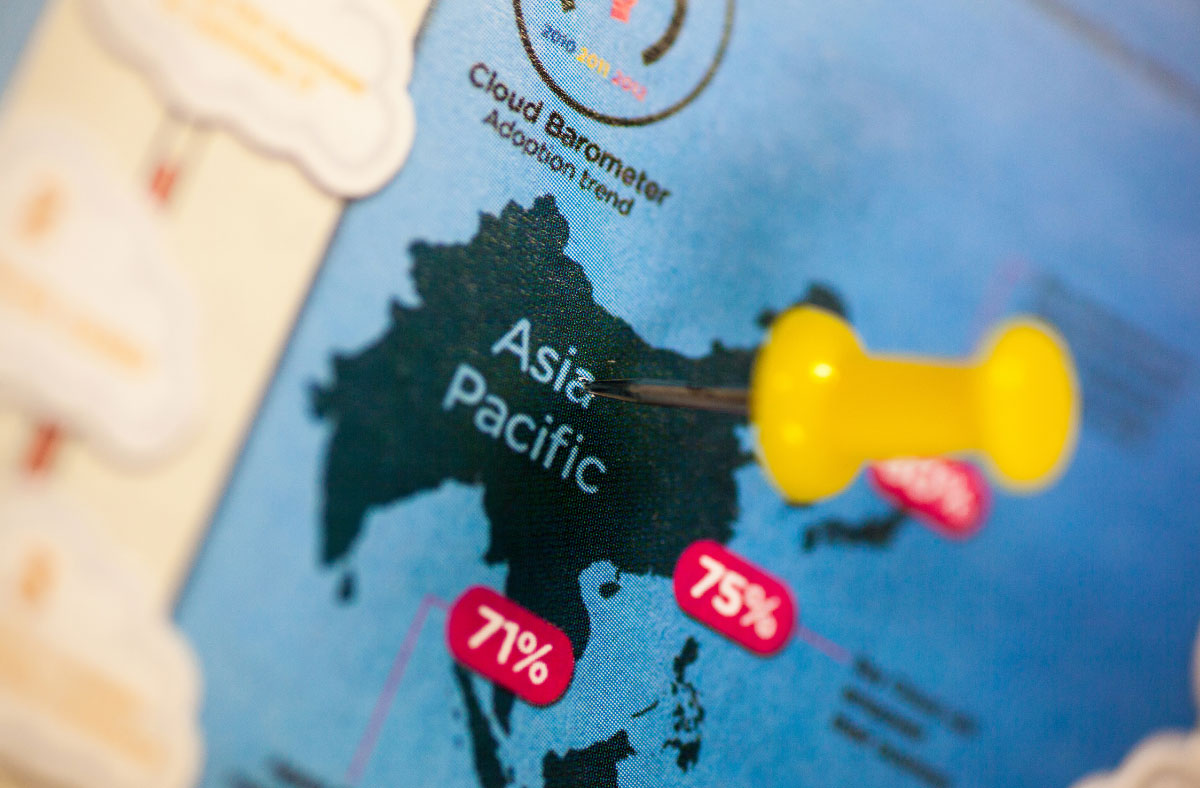
Canada, being the world’s second-largest country in terms of land size, boasts an abundance of natural resources. This rich landscape offers a wealth of water, underground treasures, and harvests vital for global momentum. Yet, when we look at the economy, Canada appears smaller. Its economy is ten times smaller than that of our neighbor to the south. As a G7 member, Canada possesses the smallest real GDP among its peers. There are about 1.3 million Canadian businesses; however, fewer than 5% are export-ready.
According to Innovation, Science, and Economic Development Canada’s annual report, exports drive Canada’s economic growth and correlate with real GDP growth. Moreover, exports allow businesses to expand beyond Canada’s modest domestic market.
But there’s a catch: few Canadian businesses export, and of those, over 85% heavily rely on the US market.
This over-reliance becomes uncomfortable considering external factors like the Buy American Act and severe competition, which diminishes the appeal of exporting.
The aim of this article isn’t to deter but to spotlight the value of an export strategy, urging Canadian businesses to look EAST – namely, the Indo-Pacific Region.
Why Indo-Pacific?
The Indo-Pacific region, with its 40 economies and over four billion people, amounts to CAD in economic activity, making it the world’s fastest-growing region. By 2040, the region will account for over half of the world’s GDP and more than 65% of its population.
Recognizing this, the Canadian government unveiled its Indo-Pacific strategy in late 2022, signaling a shift in export direction and resource allocation. For Canadian businesses, seizing this opportunity not only ensures sustainable growth but also bolsters the national economy for future generations.
However, every opportunity presents challenges. Penetrating a new market, especially an exotic one, isn’t simple. But Canada has an edge – strong ties to the region. Thanks to our immigration policy, 20% of Canadians have sort of connections there. Additionally, Canadian products have historically been well-received. An effective approach for Canadian businesses is to capitalize on e-commerce as a market-entry strategy.
The Indo-Pacific e-Market
The expansive realms of the Indo-Pacific market are responsible for an overwhelming 90% of the global e-commerce growth. Adopting cross-border e-commerce as a market-entry strategy therefore stands out as not just practical but crucially essential. The evidence is compelling:
The e-commerce market of Greater China alone dwarfs many, equal to three times Canada’s entire GDP.
Powerhouse brands such as Alibaba and JD.com are not merely platforms but are reshaping the very fabric of consumer behavior. As we gaze towards Japan, the transformation becomes even clearer. The island nation has seen its e-commerce landscape grow by nearly 30% in the share of retail distribution. Platforms like Rakuten and Amazon Japan have stepped up as the new-age shopping titans, gradually overshadowing traditional retail outlets.
South Korea’s digital footprint is equally noteworthy. In a span of five years, from 2017 to 2022, the nation’s cross-border e-commerce market made a remarkable leap, soaring from US$ 2 billion to a staggering US$ 4.5 billion. The success stories of platforms like Coupang and Gmarket illuminate this trajectory, with an average annual growth rate of 23%.
And then there’s Singapore, a beacon for the Southeast Asian e-commerce domain, dubbed the “e-commerce gateway” to its larger region. Projections suggest that eCommerce sales in this region will skyrocket, possibly quadrupling from US$ 38 billion in 2019 to an expected US$ 172 billion by 2025. This, combined with the fact that 70% of the region’s population is now online, paints a vivid picture of the digital revolution in play.
With the inherent characteristics of e-commerce, from the invaluable real-life data tracking to the immediacy of end consumer interaction, it is rapidly establishing itself as the preferred channel for market exploration.
Given the sheer purchasing power and wide acceptance among consumers, e-commerce isn’t just another platform; it can be the core of your omnichannel strategy. Such a strategy can seamlessly dovetail with traditional channels like physical stores, offering an enhanced customer experience. This synergistic approach, when infused with the allure of authentic Canadian products, promises not just sustainability but a pronounced edge in the competitive marketplace.
3 Steps to Develop Your E-Commerce Strategy for the Indo-Pacific
So far, we have delved deep into the macro-level benefits of leveraging e-commerce to enter the Indo-Pacific region. Moving forward, I want to introduce a tailored framework that can guide your e-commerce strategy development.
Think of it as a three-step process designed to provide a clear pathway: from integrating your business into the region’s e-commerce ecosystem to managing e-commerce operations and marketing activities once you’re established.
1. Strategizing
This initial phase is all about exploration. Dive deep into understanding your export readiness, assessing the feasibility of potential markets, studying the competitive landscape across both traditional and digital channels, identifying risks, formulating the most effective pricing strategy, and forecasting your financial performance.
- Readiness and Feasibility Analysis: Begin by evaluating your business’s readiness to venture into the Indo-Pacific e-markets. This entails an assessment of internal capabilities, gauging the product-market fit, and pinpointing potential barriers.
- Pricing Strategy Development: Weigh various pricing models, from cost-plus to competitive pricing. Consider aspects like local purchasing power, competitive landscape, import duties, and taxes.
- Financial Performance Analysis: Project potential revenue streams, costs, and profit margins. Account for initial investments, sustained operational costs, and expected returns.
- Market-Entry Strategy Compilation: Decide on your entry strategy. Are you targeting a couple of countries first or aiming for a more expansive reach? Your resources, willingness to take risks, and market insights will guide this decision.
2. Integrating
The foreign e-commerce markets you’re targeting operate on platforms that might be unfamiliar to western businesses and occasionally aren’t even accessible via common channels like Google. There’s also the challenge of navigating diverse cultures and languages. Not to mention ensuring the protection of your product ideas and brand. This stage emphasizes ensuring you’re on the right platforms, effectively reaching your target audience, communicating appropriately, and operating within legal confines.
- Platform Application Management: Determine the e-commerce platforms that dominate in your target Indo-Pacific areas. Think Alibaba and Lazada, but also keep an eye out for niche platforms tailored to specific locales or products.
- Ecosystem Onboarding & Integration: Grasp the entire e-commerce ecosystem of the region, which encompasses payment methods, delivery mechanisms, and review systems.
- Brand & Marketing Material Adaptation: Localize your branding. It’s more than just translation; it’s about resonating with local traditions, sentiments, and values.
- IP Protection Measures: Intellectual property norms can differ significantly across markets. Ensure you’re compliant by familiarizing yourself with local regulations.
- Platform Configuration & Optimization: Customize your online store to align with local preferences. This might mean adjusting your site’s design, improving its mobile-friendly features, or incorporating region-specific functionalities.
3. Managing Day-to-Day Operations
E-commerce operations in overseas markets, akin to the one in Canada, demand regular oversight and consistent nurturing. Navigating multiple, especially as vast as several Asian e-markets, can be tricky. Challenges range from language barriers and time zone differences to intercultural communication nuances.
As business owners, agility and adaptability are key. You might often find the need to collaborate with local experts to bridge cultural and linguistic divides, synchronize business processes effectively, and expedite your international business’s growth. Regardless of whether you’re handling tasks in-house or outsourcing, there are crucial areas of focus:
- Marketing Management: Craft and roll out localized marketing strategies, leveraging tools like SEO, PPC advertising, social media, and collaborations with local influencers.
- Operation Management: Ensure the smooth functioning of daily operations, from inventory management and prompt order processing to effective customer service.
- Supply Chain Management: Familiarize yourself with the logistics landscape. Establish relationships with dependable local suppliers, manage warehousing facilities efficiently, and prioritize timely deliveries to enhance customer experiences.
- Quality Control & Reporting: Consistently assess the caliber of products or services you’re offering. Set up comprehensive reporting systems to review sales data, gather customer feedback, and monitor other critical performance metrics, ensuring continuous improvement.
Why not seize the opportunity in this untapped market?
The Indo-Pacific is an untapped market with tremendous growth potential. As countries like the UK, US, Germany, Italy, and France increase their footprint, Canada is well-positioned to capitalize on this opportunity. E-commerce offers an efficient and economical route for Canadian businesses to make inroads. With the framework provided, businesses have a head start. And remember, the governmental agencies like Export Development Canada and Trade Commission Services are available to assist throughout the exporting journey.
By meticulously crafting your strategy, smoothly integrating into the Indo-Pacific e-commerce ecosystem, and managing daily operations efficiently, Canadian businesses stand to capture the immense potential this burgeoning market presents.






disqus comments